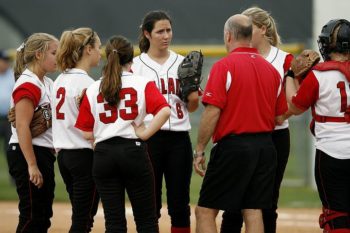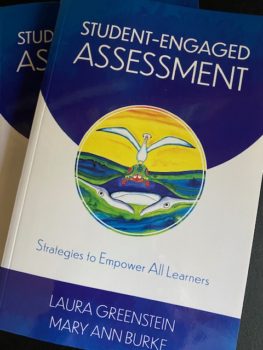 Why Do We Lose Our Minds?
Why Do We Lose Our Minds?
Two conversations this week made me question why it is as parents that we sometimes lose our collective minds. One conversation was with the parents of a 9th grader and the other was with the parents of a 6th grader. While on different topics, there was a clear tie that interlinked these two talks.
9th Grade Student’s Academic Progress Concerns
The conversation with the 9th-grade parents was about the academic progress of their child. Their child received perfect grades in the first semester of their high school career. The parents were not excited about this, however. They were upset because when they started to plan out the courses their son would take in the 10th-grade year, their student did not want to take all Advanced or Honors classes. The parents shared that this had already led to three conversations ending in tears. I asked a direct question of the parents to understand their frustration. “Why are you upset by this?” Their answer was that their child would never receive Valedictorian or the best scholarships if they did not take the hardest courses.
6th Grade Student’s Basketball Team Challenges
The conversation with the 6th-grade parents was about their child’s playing time on the school basketball team. The parents were seeking support in their frustration with the coaches and the way they were running their program. As former coaches, they did not receive much support.
Again, I asked a question. “Do you think the coaches dislike your child enough that they are willing to lose or negatively impact the rest of the team just to make them unhappy?” They agreed this was not the case. So, we found some common ground in understanding that the coaches were probably doing the best they could and with the best intentions. The conversation eventually ended.
How Parents Can Model Respect for School Leadership
The worst part of the experience was that this conversation was taking place IN FRONT OF THEIR CHILD. As the parents belittled and criticized the coaches for not showcasing their daughter’s talents more, they were unwittingly empowering their child to show the same level of disrespect for the coaches and future coaches, leaders, and bosses.
If these two conversations were outliers, I would not feel compelled to write this blog. The issue is that conversations such as these seem to be more of the norm instead of the exception. And to be clear, I have been as guilty as anyone for losing my mind in this manner on an issue or two in the past.
When thinking of how I wanted to address this issue, I was fortunate enough to read a great reflection by Paul Assaiante. His reflection prompted me to consider how to best help parents when they lose sight of what is actually important. He encouraged supporting parents to reframe their thinking by asking them about their “Big Three”.
First, ask them to write down the three most important things they WANTED for their child when they were born. They will likely respond with them being happy, healthy, cared for, prepared for the world, or some other altruistic end.
Next, ask them to write down the three most important things they WANTED for their child when it comes to whatever activity they have seemed to lose perspective regarding. For instance, if it is academics, the question would be what do you want for your child as a result of their schooling experience. If the issue pertains to athletics, the prompt is what did you want your child to get out of the experience of playing competitive sports.
Then ask them to analyze their current behaviors and to evaluate whether how they are conducting themselves would likely result in any of those six areas being actualized. This also clearly works for other scenarios outside of academics and athletics.
A Win – Win for Students, Parents, and School Leadership
In the case of academics, parents would likely answer that they want their child to learn how to learn, find their voice, become a lifelong learner, develop critical thinking skills, create friendships, become a better communicator, and/or learn how to operate in society.
In the case of athletics, parents would likely answer that they want their child to become a good teammate, learn how to push themselves, respect authority, put the good of the group ahead of their individual interests, sportsmanship, and/or learn how to lead a group of their peers.
The issue is in the midst of the moment, as parents we somehow collectively lose our minds and all focus on the things WE say are important to us. We become consumed with things like class rank, playing time, and social status.
The trick in breaking this trend and not losing our mind is simple, but hard to hear (and read). TYPICALLY, when we lose focus on what we originally wanted for our children and do not act in accordance with what WE originally said was important, it is when we are operating based on OUR EGO and not what is best for our children. Even if you can rationalize that this is not about your ego and you are just protecting your child, please remember that if we never allow our kids to experience failure we are setting them up for catastrophic consequences when the ‘real world’ inevitably punches them in the face.
I cannot overstate the importance of taking the time to consider the WHY behind your interactions with your children. The ability to take a step back and evaluate our behaviors and their alignment with what we actually want for our children may be the difference between your child growing to love academics or athletics or them hating it as they grow older. More importantly, this may also be the difference between a healthy relationship with your kids or a toxic relationship.
Whenever we lose sight of what we want for our kids and start acting in accordance with what we want for ourselves, we must actively take a second to put our own egos in check and remind ourselves that protecting our children from all struggles and failures is a recipe for disaster.
 10 Strategies to Get Your Child Excited About Learning
10 Strategies to Get Your Child Excited About Learning Why Do We Lose Our Minds?
Why Do We Lose Our Minds? Parent’s Guide to School Communication from an Educator
Parent’s Guide to School Communication from an Educator Teaching Engaged Students
Teaching Engaged Students Engagement is at the heart of motivation. This applies to preschoolers playing tee ball as well as to adults in the workplace and teachers in the classroom. When 3rd grader Torrance says he is not interested in playing ball but wants to ride a horse, his father says they can’t afford riding so he has to play ball. As a result, he’s disengaged and wanders around the outfield without purpose.
Engagement is at the heart of motivation. This applies to preschoolers playing tee ball as well as to adults in the workplace and teachers in the classroom. When 3rd grader Torrance says he is not interested in playing ball but wants to ride a horse, his father says they can’t afford riding so he has to play ball. As a result, he’s disengaged and wanders around the outfield without purpose.